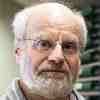Communications of the ACM
Refine your search:
From BLOG@CACM
An Enigmatic Device from Denmark
Discovery of a very rare surveying instrument in Denmark.
From BLOG@CACM
Tracking Down a Seminal Work on Computer Construction – in Russian
A Russian edition of Rutishauser's standard work on computer construction.
From BLOG@CACM
Discovery: User Manual of the Oldest Surviving Computer in the World
A rare find: the user manual of the oldest surviving computer in the world, the Zuse Z4 relay machine (1945).
From BLOG@CACM
Automatic Translators are Not Really Capable of Learning
One does not get the impression the Google Translate and DeepL translation programs are self-learning and have made real progress.
From BLOG@CACM
The World's Largest Commercial Cylindrical Slide Rule has a Scale Length of 24m
The world's largest mass-produced cylindrical slide rules come from Loga-Calculator AG in Zurich/Uster, Switzerland.
From BLOG@CACM
Hacking the Axis
The role of early high-performance computing capabilities in World War II.
From BLOG@CACM
Why Is There No Well-Known Swiss IT Industry?
Herbert Bruderer asks why no information technology industry emerged in Switzerland in the 1950s, despite the appearance of computers from several sources.
From BLOG@CACM
Leonardo da Vinci's Robot Lion
We are celebrating the 500th anniversary of Leonardo da Vinci's death with a major exhibition of the Renaissance painter's works.
From BLOG@CACM
How Do You Calculate with the Sector?
The sector was developed in the second half of the 16th century, and was in widespread use until the end of the 19th century,
From BLOG@CACM
Will We All Be Wearing Wearables?
If wearable computing products are really needed, what are the biggest practical and research challenges to mainstream adoption?
From BLOG@CACM
The Model Maker of Leonardo da Vinci, Blaise Pascal, and Charles Babbage
Discovery of a previously unknown replica of the legendary Swiss Millionaire calculating machine at Carnegie Mellon University in Pittsburgh, PA.
From BLOG@CACM
Mystery Dating of the World-famous 'Millionaire' Calculating Machine Solved
Regarding the discovery of new documents about the H.W. Egli AG (Zurich) company in the Museum für Kommunikation, Berne, Switzerland.
From BLOG@CACM
Did Albert Einstein Calculate on the 'Millionaire' in Zurich?
In 1897, ETH Zurich was the first university in the world to have a copy of the legendary four-species calculating machine Millionaire.
From BLOG@CACM
The Binary System Was Created Long Before Leibniz
There are reports of much older number systems using only two symbols that have been developed mainly in Asia.
From BLOG@CACM
SC16 Expands Focus on HPC Provider Community, Practitioners
State of the Practice focus at SC16 expands opportunities for HPC service providers and practitioners to publish their innovations and best practices.
From BLOG@CACM
Intriguing Possibilities as HPC Reaches an Inflection Point
SC15 is taking place at a time when high-performance computing (HPC) finds itself at an inflection point. As we approach the end of CMOS, the path forward for HPC's...
From BLOG@CACM
SF Reading For Computer Scientists: Summer 2015
Summer reading recommendations for computer scientists, courtesy of the SIGCSE 2015 Using Science Fiction in CS Courses BOF.
From BLOG@CACM
Learning About Parallel and Distributed Computing
Parallel and distributed computing are now in the core CS curriculum, and every CS program should be teaching their students about it. How can CS educators learn...
From BLOG@CACM
A Taste of CHI Interactivity in Seoul
Observations from CHI 2015, the first SIGCHI annual conference held in Asia.
From BLOG@CACM










